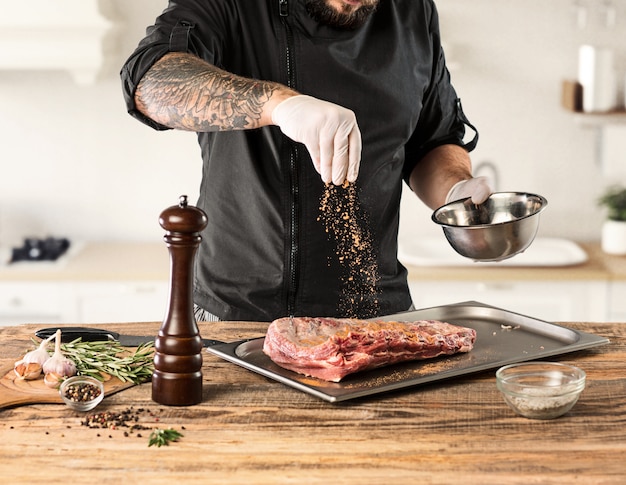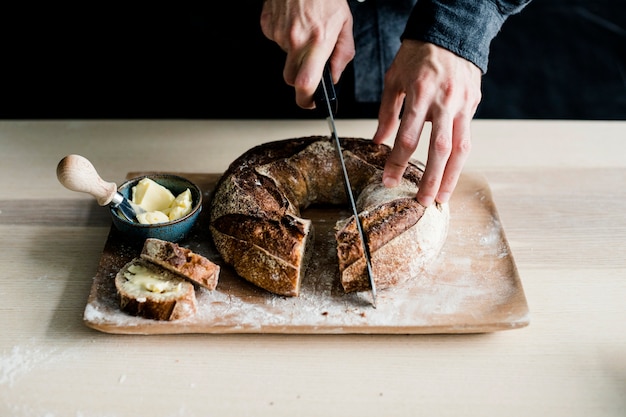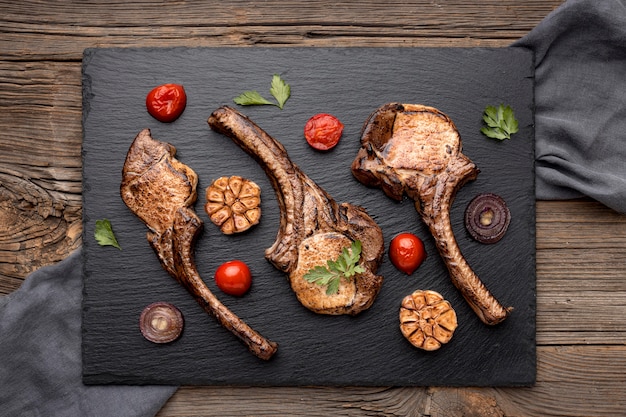You've bagged a fine buck, and now you're itching to turn that prize into a delectable meal. But hold on a second, sport. cooking venison is a bit different from your usual beef or lamb. It needs a little extra attention to bring out its unique, rich flavor. Don't worry, though, I'm here to be your guide. I've been cooking venison for years, and I've learned a thing or two along the way. I'll be sharing my top tips and tricks, from choosing the right cut to mastering the perfect sear, and, of course, some mouth-watering recipes.
(Part 1) Choosing the Right Cut

First things first, you need to pick the right cut for the dish you have in mind. Venison comes in all sorts of cuts, each with its own texture and flavor. I tend to gravitate towards the more tender cuts like the tenderloin or backstrap. These are ideal for grilling or pan-frying, and they're simply divine. But don't dismiss the tougher cuts either, they're perfect for slow-cooked wonders.
Tenderloin: The King of Cuts
The tenderloin is the most coveted cut of venison, known for its buttery tenderness and delicate flavor. Think of it as the filet mignon of the deer world. It's a true culinary gem that's best enjoyed with quick cooking methods like grilling, pan-frying, or roasting.
Backstrap: A Close Second
The backstrap is another tender cut, but it's a bit leaner than the tenderloin. It's a fantastic choice for grilling or pan-frying, holding its shape beautifully as it cooks. You can also roast this cut, though you'll need to keep a watchful eye on the cooking time.
Shoulder: The Braising Hero
The shoulder is a tougher cut, but it's bursting with flavor. It's ideal for braising or slow cooking, where it'll transform into a marvel of tenderness. I love making a hearty venison stew with shoulder, it's truly a taste of the wild.
Leg: A Versatile Choice
The leg is a versatile cut that can be roasted, braised, or even ground. It's a good choice for those who enjoy a bit more chew in their meat.
(Part 2) Preparing the Venison

Once you've chosen your cut, it's time to get it ready for cooking. This is where things get a bit different from your usual beef or lamb. Venison is a lean meat, and it can dry out easily if you're not careful. So, you've got to pay attention to the prep to keep things moist and flavorful.
Trim the Fat
First, trim off any excess fat. You don't want a ton of fat on your venison, as it can make it taste gamey. Just a thin layer of fat will help keep the meat moist during cooking.
Marinate or Brine: A Symphony of Flavors
Here's where you can get creative. Venison can be a little dry, so it's a good idea to marinate it or brine it before cooking. A marinade will tenderize the meat and add flavor, while a brine will help to keep it moist.
Marinades: A Flavorful Bath
For marinades, I like to use a mixture of acidic ingredients like lemon juice or vinegar, along with herbs, spices, and oil. You can also add things like soy sauce or honey for extra depth of flavor. Let the venison marinate for at least an hour, or up to overnight in the fridge. I find a good overnight marinate really helps to infuse the venison with a rich flavor profile.
Brine: A Moisture Boost
A brine is a salt water solution that helps to retain moisture in the meat. To brine venison, simply submerge it in a mixture of water, salt, and sugar for several hours. I usually brine for about 4 hours, but you can leave it for longer. The longer it brines, the more moisture it will retain.
(Part 3) Cooking Venison: The Essentials

Right, now we're getting into the good stuff - the actual cooking! Venison is best cooked to medium-rare, as it can become dry and tough if overcooked. You want to aim for an internal temperature of around 130-140°F (54-60°C). Don't be afraid to use a meat thermometer to check the temperature. It's your best friend when it comes to venison, especially if you're unsure about doneness.
Grilling: A Smoky Delight
Grilling is a fantastic way to cook venison. It gives it a nice smoky flavor and creates a delicious sear that locks in the juices. Make sure your grill is nice and hot, and sear the venison for about 2-3 minutes per side. Then, reduce the heat and cook until the venison is cooked to your liking. You'll know it's ready when it's slightly pink in the center and juices run clear.
Pan-Frying: Quick and Easy
Pan-frying is another quick and easy way to cook venison. Heat a heavy-bottomed pan over medium-high heat and add a little oil. Sear the venison for about 2-3 minutes per side, then reduce the heat and cook until done. Don't overcrowd the pan, or the venison won't sear properly. This method is perfect for smaller cuts, like tenderloin or backstrap.
Roasting: Slow and Steady
Roasting is a good option for larger cuts of venison, like the leg or shoulder. Preheat your oven to 350°F (175°C) and season the venison with salt, pepper, and any other herbs or spices you like. Place the venison in a roasting pan and cook for about 15-20 minutes per pound. You can also add some vegetables to the roasting pan for a complete meal.
(Part 4) Serving Up Delicious Venison: The Art of Pairing
Now, you've cooked your venison to perfection, and it's ready to be enjoyed. But what to serve it with? Well, the possibilities are endless! Venison is incredibly versatile and pairs beautifully with a variety of sides and sauces.
Sides: The Perfect Accompaniments
Here are some classic side dishes that work wonderfully with venison:
- mashed potatoes: creamy mashed potatoes are the ultimate comfort food and pair perfectly with venison. Try adding some garlic or herbs for extra flavour.
- Roasted vegetables: Roasted vegetables like carrots, parsnips, and Brussels sprouts add a nice sweetness and earthiness that complements venison.
- Wild rice pilaf: wild rice adds a nutty flavour and a touch of elegance to your venison dish.
- Cranberry sauce: This sweet and tart sauce is a classic pairing for venison, especially during the holiday season.
- Apple sauce: The sweetness of apple sauce cuts through the richness of venison, creating a well-balanced flavour combination.
- Polenta: Creamy polenta is a great way to soak up the rich juices of a venison steak.
- butternut squash purée: The sweetness and creaminess of butternut squash pairs well with the gamey flavour of venison.
Sauces: The Finishing Touches
A rich and flavorful sauce can really elevate your venison dish. Here are a few ideas for sauces that go well with venison:
- Red wine sauce: A classic red wine sauce with shallots, garlic, and herbs is a rich and satisfying accompaniment to venison.
- Mushroom sauce: The earthy flavour of mushrooms complements the taste of venison beautifully.
- Berry sauce: A sweet and tangy berry sauce, like blackberry or raspberry, adds a touch of brightness to venison.
- Creamy horseradish sauce: This tangy sauce adds a nice kick to venison.
- Port wine sauce: The sweetness of port wine sauce balances the gamey flavor of venison.
- Wild mushroom gravy: This rich and earthy gravy is perfect for venison steaks or roasts.
(Part 5) Enjoying Your Venison: From Plate to Palate
Now, it's time to sit down and savour your hard work. Remember, venison is best served medium-rare. It should be pink in the center and juicy. And don't be afraid to experiment with different flavour combinations. With a bit of creativity, you can create some truly amazing venison dishes.
Don't Overcook: The Key to Tenderness
I've said it before, but I'll say it again. Overcooked venison is dry and tough. Use a meat thermometer to ensure your venison is cooked to the right temperature. For medium-rare, aim for an internal temperature of 130-140°F (54-60°C).
Let it Rest: The Secret to Juiciness
After cooking, let the venison rest for at least 5-10 minutes before slicing. This allows the juices to redistribute, resulting in a more tender and flavorful piece of meat. Think of it as giving the venison a little breather before enjoying it.
Slice it Thinly: Ease of Enjoyment
Slice the venison thinly across the grain. This makes it easier to chew and helps to prevent the meat from becoming tough. Imagine a delicate slice of venison melting in your mouth, that's what we're aiming for.
Serve with a Side: The Perfect Balance
As we talked about, a nice side dish will complement your venison. Consider some creamy mashed potatoes, roasted vegetables, or a wild rice pilaf. You'll also want to pair it with a sauce, which will add another layer of flavor and moisture.
(Part 6) Storage and Leftovers: Making the Most of Your Venison
You might have some leftovers after your delicious venison feast. Don't worry, you can easily store them for later. Here's what I recommend:
Refrigerator: Short-Term Storage
If you're storing venison in the refrigerator, make sure it's properly sealed in an airtight container. It will last for 3-4 days. I like to put it in a container with a tight-fitting lid or wrap it tightly in plastic wrap or aluminum foil.
Freezer: Long-Term Storage
For longer storage, you can freeze venison. Wrap it tightly in plastic wrap or aluminum foil, and then place it in a freezer-safe bag. It will last for 3-4 months in the freezer. Label the bag with the date so you know when it was frozen.
Reheating: Bringing Back the Flavor
You can reheat venison in the oven, microwave, or skillet. If you're reheating in the oven, preheat it to 350°F (175°C) and heat the venison for about 10-15 minutes, or until heated through. For the microwave, just pop it in on a low setting. For the skillet, heat some oil in a pan over medium heat and reheat the venison for a few minutes per side.
(Part 7) Beyond the Basics: Exploring venison recipes
So far, we've been focusing on the fundamentals of venison cooking. But now let's delve into some more specific recipes that I've enjoyed over the years. These are sure to inspire you to get creative in the kitchen.
pan-seared venison with Blackberry Sauce: A Sweet and Savory Delight
Ingredients
- 1 pound venison tenderloin, trimmed
- 1 tablespoon olive oil
- Salt and pepper to taste
- 1/2 cup blackberry preserves
- 1/4 cup red wine vinegar
- 1 tablespoon chopped fresh rosemary
- 1 tablespoon chopped fresh thyme
Instructions
- Season the venison with salt and pepper.
- Heat the olive oil in a large skillet over medium-high heat.
- Sear the venison for 2-3 minutes per side, or until browned.
- Reduce the heat to medium and cook the venison for another 3-4 minutes per side, or until cooked to your liking.
- Remove the venison from the skillet and set aside.
- In the same skillet, add the blackberry preserves, red wine vinegar, rosemary, and thyme.
- Bring the mixture to a simmer and cook for 2-3 minutes, or until thickened.
- Spoon the blackberry sauce over the venison and serve with your favorite side dishes.
Venison Stew with wild mushrooms: A Hearty and Flavorful Feast
Ingredients
- 1 pound venison shoulder, cubed
- 1 tablespoon olive oil
- 1 onion, chopped
- 2 carrots, chopped
- 2 celery stalks, chopped
- 1 cup red wine
- 2 cups beef broth
- 1 teaspoon dried thyme
- 1/2 teaspoon salt
- 1/4 teaspoon black pepper
- 1 cup mixed wild mushrooms, sliced
- 1 tablespoon chopped fresh parsley
Instructions
- In a large dutch oven or pot, heat the olive oil over medium heat.
- Brown the venison on all sides. Remove the venison from the pot and set aside.
- Add the onion, carrots, and celery to the pot and cook for 5 minutes, or until softened.
- Pour in the red wine and bring to a simmer. Cook for 2-3 minutes, or until the wine has reduced by half.
- Add the beef broth, thyme, salt, and pepper. Stir to combine.
- Return the venison to the pot.
- Bring the mixture to a boil, then reduce the heat to low and simmer for 1 1/2-2 hours, or until the venison is very tender.
- Add the mushrooms and cook for 5 minutes, or until softened.
- Stir in the parsley and serve hot with crusty bread or a side of mashed potatoes.
venison chili: A Spicy and Satisfying Winter Warmer
Ingredients
- 1 pound venison, ground
- 1 tablespoon olive oil
- 1 onion, chopped
- 1 green bell pepper, chopped
- 2 cloves garlic, minced
- 1 (15 ounce) can black beans, rinsed and drained
- 1 (15 ounce) can kidney beans, rinsed and drained
- 1 (15 ounce) can diced tomatoes, undrained
- 1 (15 ounce) can tomato sauce
- 1 teaspoon chili powder
- 1/2 teaspoon cumin
- 1/4 teaspoon cayenne pepper (optional)
- Salt and pepper to taste
- Toppings: shredded cheese, sour cream, chopped onions, cilantro
Instructions
- In a large pot or Dutch oven, heat the olive oil over medium heat.
- Brown the ground venison, breaking it up with a spoon.
- Add the onion, green bell pepper, and garlic and cook until softened, about 5 minutes.
- Stir in the black beans, kidney beans, diced tomatoes, tomato sauce, chili powder, cumin, and cayenne pepper (if using).
- Bring the chili to a simmer, then reduce the heat to low and simmer for at least 30 minutes, or until the flavors have melded.
- Season with salt and pepper to taste.
- Serve hot with your favorite toppings.
(Part 8) FAQs: Common Questions Answered
Here are some common questions about cooking venison, along with answers to help you feel more confident in the kitchen.
Why Does Venison Sometimes Taste Gamey?
Venison can sometimes have a gamey flavour due to the diet of the deer. Deer that feed on a diet of primarily grasses and herbs will have a milder flavor, while those that eat more berries or other foraged foods may have a stronger gamey flavor. If you find your venison is a bit gamey, there are a few things you can do. Marinating it in a vinegar-based marinade can help to neutralize the gamey flavour. You can also try adding some sweetness to the dish, like a touch of honey or brown sugar, to balance out the gamey flavour.
What's the Best Way to Cook Venison?
The best way to cook venison depends on the cut and your personal preferences. Tender cuts like the tenderloin and backstrap are great for grilling or pan-frying. Tougher cuts like the shoulder and leg are better suited for braising or slow cooking.
How Can I Tell If Venison is Done?
The best way to tell if venison is done is to use a meat thermometer. For medium-rare, aim for an internal temperature of 130-140°F (54-60°C). You can also check for doneness by pressing on the meat. If it springs back, it's done. If it's still soft, it needs more cooking.
Is Venison Healthy?
Venison is a lean and healthy source of protein. It's lower in fat and calories than beef or pork, and it's a good source of iron and zinc. It's also a good source of protein, niacin, and B vitamins.
How Can I Find Venison?
You can often find venison at butcher shops, farmers markets, and specialty grocery stores. You can also check with local hunters, who may be willing to sell you some of their venison. If you're not sure where to find venison, ask your butcher or local farmer's market for recommendations.
So there you have it, my friends, your guide to cooking the most delicious venison. Remember, with a little practice and the right techniques, you can transform a wild buck into a culinary masterpiece. Happy hunting, and happy cooking!
Everyone is watching

Prime Rib Roast Cooking Time Chart: Per Pound Guide
Cooking TipsPrime rib roast. Just the name conjures images of lavish dinners, crackling fires, and hearty laughter. It’s ...

How Long to Bake Potatoes in the Oven (Perfect Every Time)
Cooking TipsBaked potatoes are a staple in my kitchen. They're incredibly versatile, delicious, and surprisingly easy to m...

Perfect Rice Every Time: The Ultimate Guide to Cooking Rice
Cooking TipsAs a self-proclaimed foodie, I've always been a bit obsessed with rice. It's the foundation of countless cuisi...

The Ultimate Guide to Cooking Asparagus: Tips, Techniques, and Recipes
Cooking TipsAsparagus. The mere mention of this spring delicacy conjures up images of vibrant green spears, crisp and burs...

Ultimate Guide to Cooking the Perfect Thanksgiving Turkey
Cooking TipsThanksgiving. Just the word conjures up images of overflowing tables laden with delicious food, the scent of r...
